I got the new Keysight and Keithley bench DMM and wanted to see how my old Fluke DMM's has handled the passage of time.
I do not have any precision referenc, only one of the 4 voltage ebay ones, but running all DMM's in parallel will show how well they compare.
I changed to 10 NLPC and increased resolution on Keithley, the other DMM's are running default configuration.
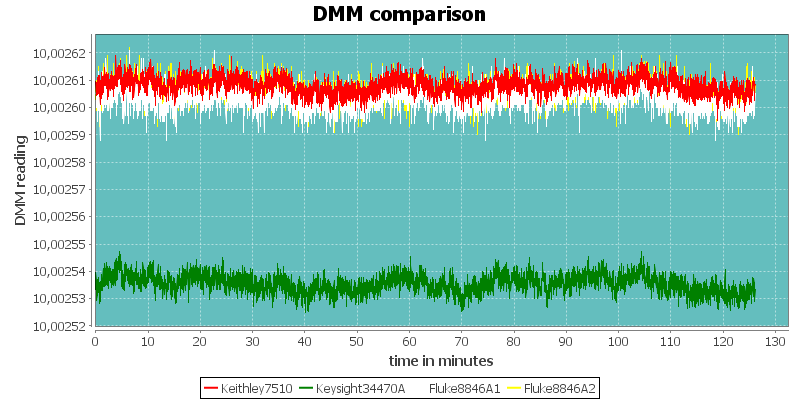
Looks like the two Fluke and the Keithley agree and the Keysight is a bit out, but lets clean it up a bit:
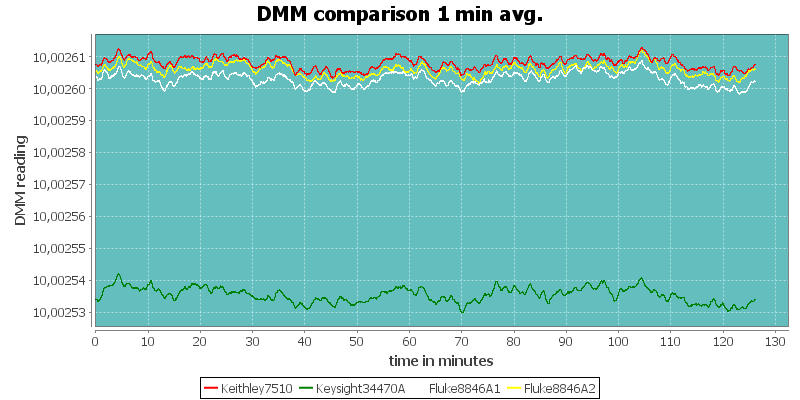
With 1 minute averaging (in the graphing software) the curves are much easier to see.
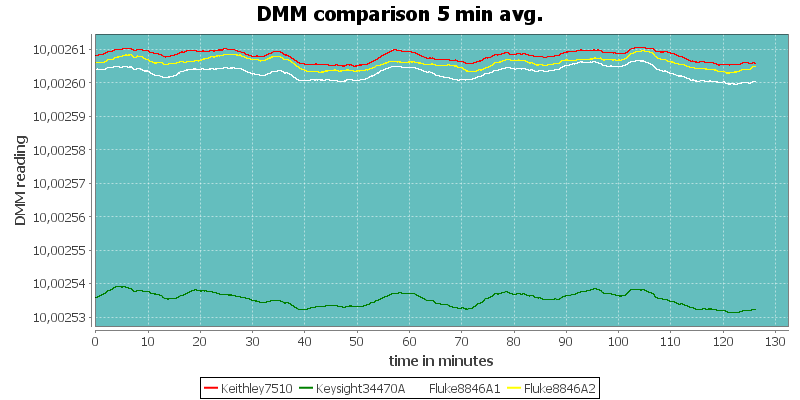
5 minutes averaging makes them even smoother.
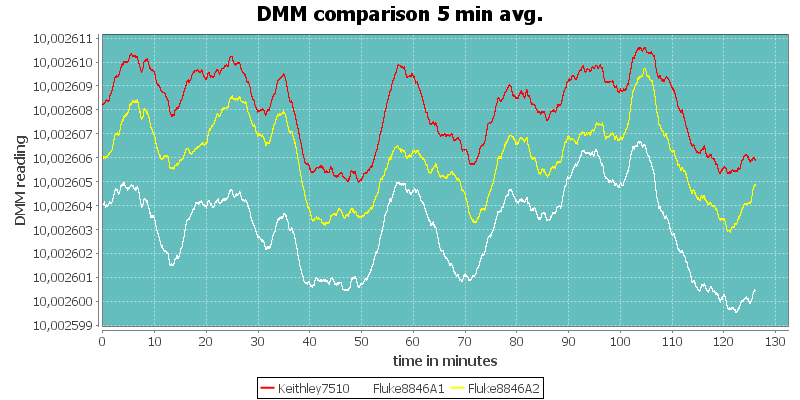
And without the Keysight, it looks like the Flukes are still good.
All meters basically agree on the variation, it looks like it is from the reference.
But there is some variation between the DMM's:
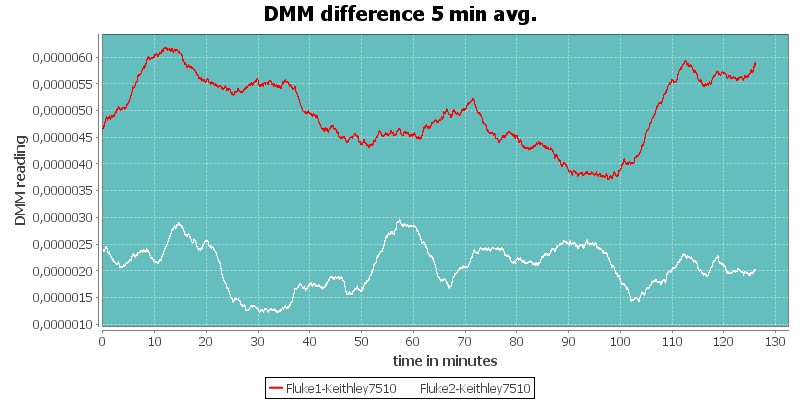
Note: My setup is not a high precision setup, just ordinary test leads between the DMM's and the reference and no shielding. I am reading a value each second.